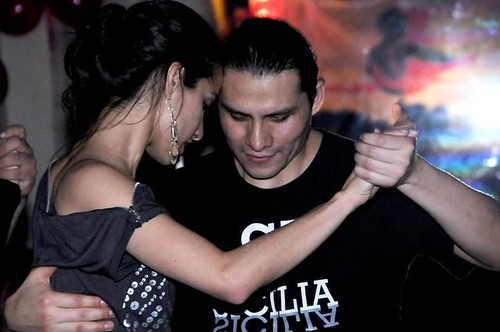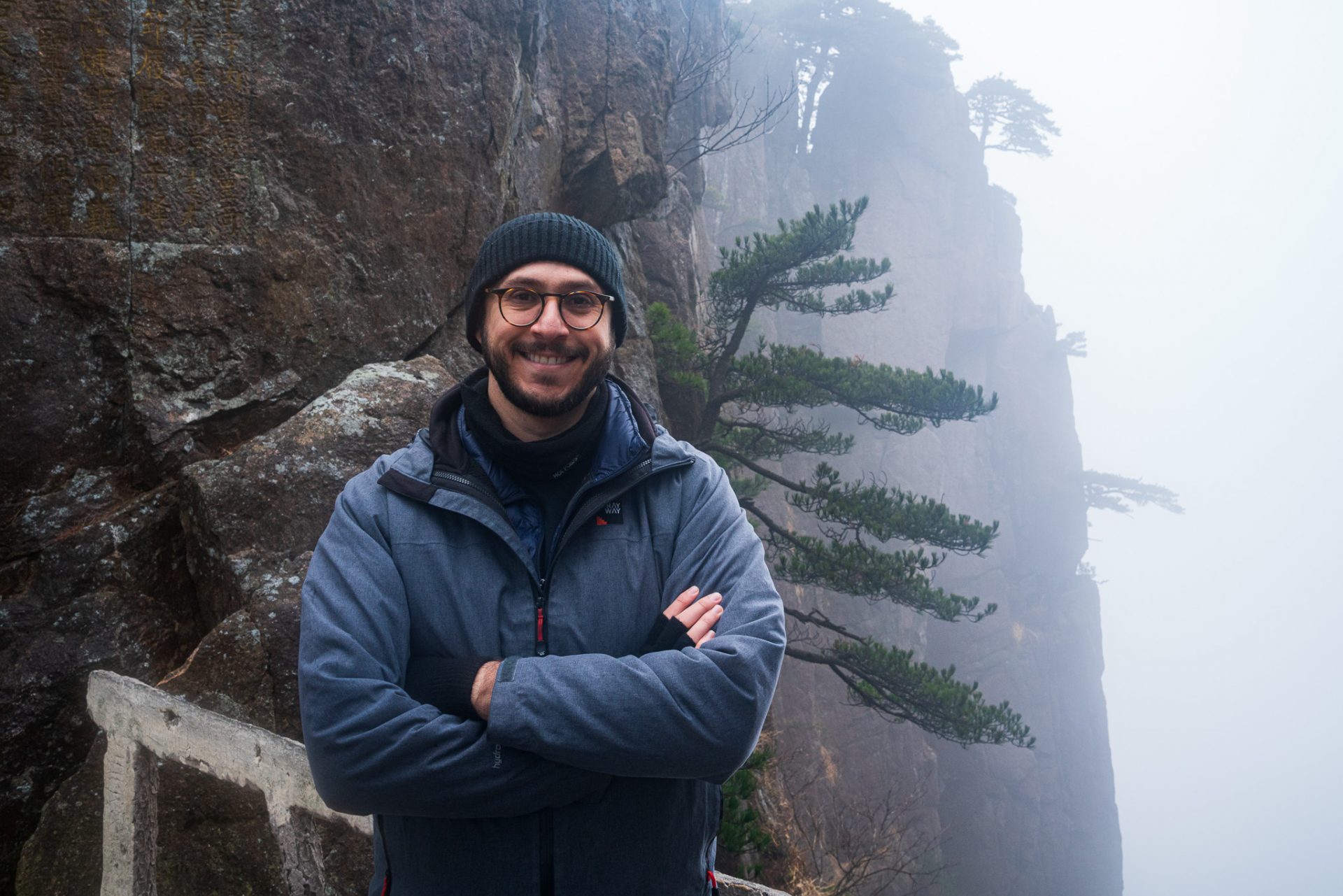An Authentic Tango Experience While Tackling the Language Barrier
When I announced my plans to travel to Argentina I knew immediately that there were several friends I absolutely had to get in touch with. One was Kellen, a friend who had spent 3 months the previous summer in Buenos Aires as part of a fantastic study abroad program. He had honed his Spanish, danced up a storm, and met a bunch of amazing people.
When I told him about my plans I was immediately greeted by a giant smile which quickly transitioned into a list of places to see, foods to eat and friends that I needed to meet. One of those friends was Kellen’s Argentine tango instructor and good friend, Rodrigo.
New Friends
Kellen quickly connected Rodrigo and me on Facebook and we began to chat. The one catch? English wasn’t one of the languages he spoke and…well…my Spanish could be called a lot of things but fluent is definitely not one of them. Not to despair though, where there’s a will there is always a way. Before long we’d friended each other on Facebook and using my very basic Spanish and Google translate we were able to get acquainted and chat away.
By the time I arrived in Buenos Aires I had a list of tips, places to see, and suggestions from Rodrigo which were a huge help. The real fun started during my third and final time in Buenos Aires when our schedules finally aligned. We set a time and place to meet. As it worked out it was about a 10 minute walk from my hostel, located in the heart of the Palermo district.
I’ll admit, I was a bit nervous. Here I was standing on a street corner in a fairly quiet part of Buenos Airies at 11pm waiting to meet someone I’d only seen photos of on Facebook. I didn’t have a phone, didn’t know for a fact if I was in the right spot or not, and wasn’t sure how well we’d be able to communicate given the absence of Google Translate. Over the previous two weeks I’d spent in Argentina a lot of my Spanish had come back to me, but would it be enough?
As an odd assortment of people walked by I’m sure I left a few feeling uneasy as I tried to make inquisitive eye contact while making that haphazard “is it you?” face. Eventually Rodrigo arrived and with a warm smile introduced himself. We said hello and chatted with each other breaking through the initial awkwardness that makes communicating hard. As we (or perhaps more I) started to relax we began walking and he told me that it was too early to Tango yet (yep, 11pm is the Argentine equivalent of 6pm elsewhere!) but he had a few friends he wanted me to meet.
A five minute walk brought us to an apartment where I was introduced to several of his friends: A group of several Argentinians and an Israeli exchange student. We quickly got acquainted and made our way to the rooftop terrace where they had a table and set of chairs. The evening air was warm and delightful. It was also still fairly light out as it was the heart of Argentina’s summer.
They had ordered pizza and picked up several liters of soda and beer. As it turned out the evening was a bit of a post New Years Celebration among friends. A celebration I felt very blessed to be included in.
As the meal and conversation transitioned from eating, we prepared for a bit of dancing. The table was moved to the side, the ipod switched to Tango music, and the performances and lessons were on!
The Dances
Despite my background in Ballroom and focus in Latin dance, Argentine Tango has always eluded me. Which is to say that even the basic was something that I had previously only seen, but never danced. The beat, the rhythm, the flow, it was all new and I quickly found myself more than a little confused. Luckily under the guidance of Rodrigo, and several of his patient friends, I learned the basic box and at least started to get a feel for the dance while only periodically mangling the poor girl’s toes.
Once sufficiently satisfied that I’d gotten the basics down to Argentine Tango and sensing my background in slightly more fast paced/constantly paced dances they introduced me to the Milonga. This dance, which shares the same name as many of the city’s tango venues, is a faster, constant version of the tango. Wikipedia explains the Milgona as, “Milonga,(in 2/4 time) has a strongly accented beat, and sometimes an underlying “habanera” rhythm. Dancers avoid pausing, and often introduce double time steps (incorrectly called syncopation and more appropriately called traspies) into their walks and turns. Milonga dancing uses the same basic elements as tango, with a strong emphasis on the rhythm, and figures that tend to be less complex than some danced in other varieties of tango. Some tango instructors say that tango steps should not be used in milonga and that milonga has its own special rhythm and steps, which are quite different from tango.”
While the beat was easier to relate to for me, I have to admit that the speed and execution left me more than a little baffled and confused. Still, it was a fantastic introduction to a dance which was both passionate, engaging, and exciting as well as being an entirely new dance for me.
To my surprise we finished the lessons out with a third and far more traditional dance, the chacarera (I believe). The dance was a zero contact partner dance which resembled a traditional waltz or Victorian era dance. A fun line dance of sorts, it consisted of a number of turns, pauses, a bit of tap dancing, and then a final salute which left both partners near embrace without touching. While I initially thought it was just a fun cultural dance they were sharing with me, later I’d learned that it was actively used and danced in the Milongas.
The Milonga
As 3:30AM quickly approached Rodrigo and I said our goodbyes and our thank yous before setting off into the night. I assumed that we were probably done with the evening, but quickly realized that it had just started. As we made our way back out to the street he explained that the good tango clubs in the area were just getting going. Before long we arrived at one such venue, located in the spacious basement/bar area of a large building. The area was packed with a ring of small tables lining a large rectangular dance floor. My guide quickly chatted with one of the local waiters, who he obviously knew, and found us a seat.
Before long we were joined by two German girls we had bumped into on the walk over and had been introduced to by one of Rodrigo’s friends who had decided to call it a night. The girls were in Argentina learning Tango and quickly took the dance floor where Rodrigo launched them into a series of fantastic routines. His tango was skillful and an absolute delight to watch.
As the night went on the venue would play a series of 5 songs back to back before some sort of old rock jam would blast on as a sign to rotate or take a break. Then every 10th song or so they would play an Chacarera or two, which were equally fun to watch! Though possessed of a flimsy understanding of the bare basics for both, I have to admit that I opted to sit, relax and watch the dancers without ever joining them. Perhaps after a chance to practice a bit more, and to force the basics of Argentine tango into my memory, I’ll be up for the challenge.
By 5:30AM I could barely keep my eyes open and the wear and tear on my body from the previous week’s travels and New Years festivities came crashing down upon me. I bid the girls goodnight, thanked Rodrigo for one of the most delightful evenings I’d had in Argentina, and began my walk home.
He was a truly wonderful host and one who patiently put up with my dreadful Spanish and bad jokes while sharing his culture, music and dance with me. My first night at an Argentine Milonga will always stand out as one of my favorite dance experiences and easily one of my fondest memories from Buenos Aires.
**The photos in this post are of Rodrigo and his dance partners used with permission from his facebook. Impressive ehh?
Inspired to learn a bit of Tango or at least listen to some? Browse Amazon’s digital Tango Music library.





Rodrigo is hot!! Don’t tell hubby I said that! 🙂
haha, your secret is safe with my readers and I!